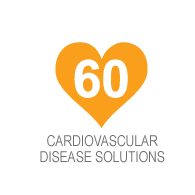Leading minimally-invasive technologies for diagnosing and treating a variety of heart and vascular conditions

Delivering Meaningful Innovation
A Pioneering Alternative to Blood Thinners. The WATCHMAN FLX™ Left Atrial Appendage Closure (LAAC) Device is indicated to reduce the risk of stroke in patients with non-valvular atrial fibrillation (NVAF) who need an alternative to oral anticoagulation therapy by permanently closing off the left atrial appendage – the area of the heart where stroke-causing blood clots commonly form in NVAF. This technology, which is built upon the most studied and implanted LAAC device in the world, features a new, fully rounded design that offers physicians the ability to safely enter, and maneuver within, the left atrial appendage.
Designed to Optimize TAVR. The SENTINEL™ Cerebral Protection System (CPS) is the first and only commercially available device in the U.S. offering protected TAVR – proven embolic protection against the risk of TAVR-related stroke.
Healing with Confidence. The SYNERGY™ Bioabsorbable Polymer Stent System is the first and only FDA-approved stent with a fast-absorbing bioabsorbable polymer coating to enable rapid healing and provide freedom from long-term polymer exposure.
Conditions We Treat
- Cardiovascular Diseases
- Coronary Artery Disease
- Acute Myocardial Infarction
Solutions We Offer
Structural Heart
- Left Atrial Appendage Closure (LAAC)
- Transcatheter Aortic Valve Replacement (TAVR)
- Cerebral Embolic Protection (CEP)
Coronary Therapies
- Drug-Eluting Stents
- Intravascular Ultrasound (IVUS)
- Fractional Flow Reserve (FFR)
- Atherectomy
- Bare-Metal Stents
- Catheters
- Balloons
- Guide Wires
- Thrombectomy

Sources
1. Arora S, et al. "Transcatheter Aortic Valve Replacement: Comprehensive Review and Present Status." Tex Heart Inst J. 2017; 44(1):29-38.
2. CHD Source: Hurst’s the Heart, edition 12e. MI Source: AHA Heart Disease & Stroke Statistics, 2010 Update
3. Boston Scientific – Internal data
